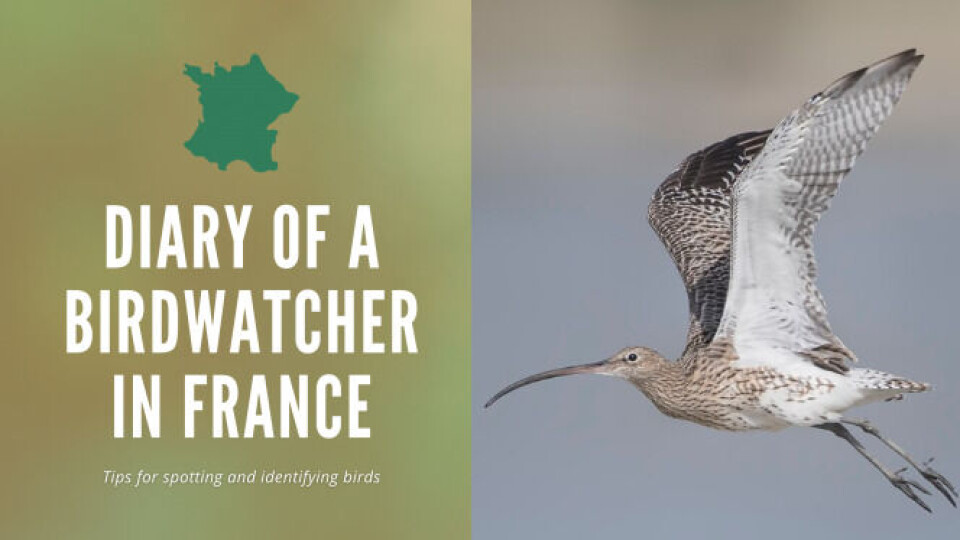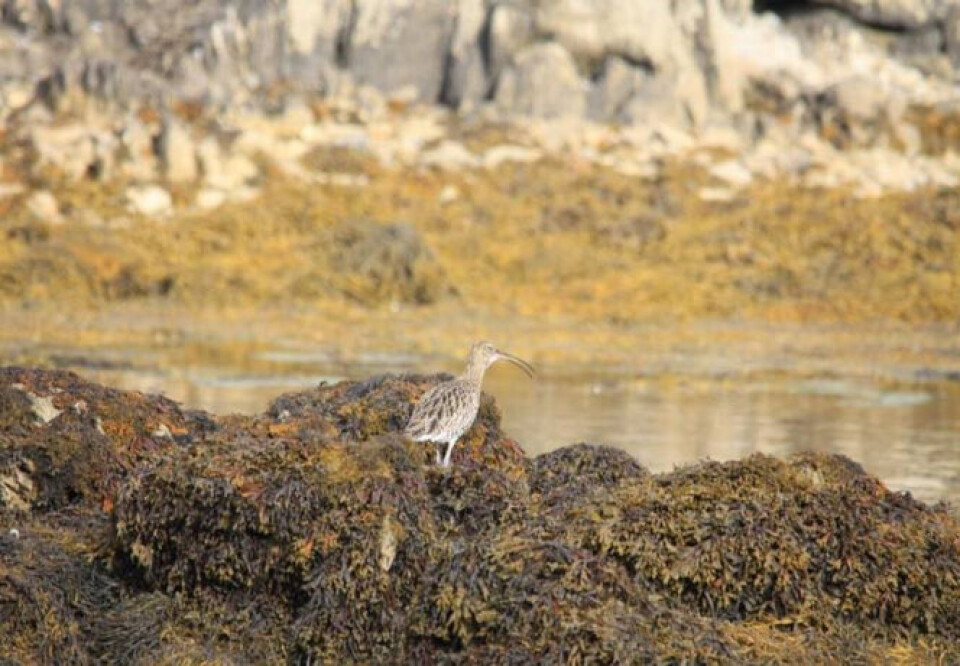-
The origins and meaning of tirer les marrons du feu
As Christmas approaches, we look at a phrase to describe someone who takes advantage of a situation
-
How to identify lounging lizards in France
Learn about the habitats and behaviours of diverse lizard species, from the common wall lizard to the elusive Western three-toed skink
-
The origins and long history of France’s unique wildlife officers
Connexion talks to Julien Nicolas, who fulfils a role created by Charlemagne in the year 803, tackling wildlife posing a danger to the public
Diary of a birdwatcher in France: Migration
Jonathan Kemp describes his magical recent trip to the Netherlands, where the sight of migratory birds got him thinking about explanations behind the mysterious phenomenon

“Spooky action at a distance.”
The above is an alleged comment from Albert Einstein, when confronted with a mysterious quirk of quantum mechanics known as ‘quantum entanglement’.
The phenomenon, which has puzzled scientists for over 75 years, is a very strange idea that seems to indicate that two particles, created at the same instant, remain ‘entangled’ with each other so that regardless of distance, what affects one instantly affects the other.
What, you may well be asking, has this got to do with birds? Well, the investigation into migration and how birds know where they are on these extraordinary journeys, has led to the idea that they may be able to visualise the Earth’s magnetic field through a form of quantum entanglement.
It might be – this is just a theory – that certain molecular reactions in a bird’s eye will build a map of the geomagnetic field through which they are travelling. It is, of course, not the only ability that birds use to orientate themselves; remembered visual signs on the landscape (so adult birds will lead juveniles on their first-year journeys), navigation using the stars, including our own sun, probably certain scents in the air as they finally home in on their nesting grounds; all these and others skills play a part.
However this quantum theory is but one of the very mind-boggling phenomena that is contained in this (nearly) hidden world of long-distance bird migration.
To discover more about this strangest of ideas, it is worth reading a wonderful book by one of the leading writers about migration, ‘A World on the Wing’, by Scott Weidensaul. Only now, with the technological advances enabled by micro technology that enable us to follow these journeys, has it become possible to investigate this world.
I was lucky in early September to visit the Netherlands, whose coastal areas are a hotspot for annual migration.
I witnessed numbers of birds that are the stuff of dreams and legends from former epochs.
Many of the birds I saw can be seen here in France, but not in the numbers it was possible to see there. To give but one example, I saw about 3000 curlews (courlis cendré in French) flying to land after their journey down from further north, the breeding grounds in Scandinavia.

The call of the curlew is a cry that is so special that, once heard, it will haunt your memory like a mystery. Normally it is heard on coastlands, but also inland on marshy moorlands.
Sometimes wailing, sometimes bubbling, sometimes trilling, it is a sound that evokes Wuthering Heights for me, probably because I first heard it coming from the mists of the north Yorkshire moors.
That extraordinary downward curved beak – up to 15 centimetres long on females, giving a slightly different diet than the males, who have shorter beaks – is used to dig deep into mudflats, damp soils, rock pools or seaweed to search out the invertebrates that live their burrowing lives hidden down in the dark, lugworms, crabs, shellfish.
With a wingspan of up to one metre, it is the largest European wader.
Another wader with a curved beak - but this time a graceful, upward curve - that I was lucky to see in good numbers was the pied avocet (avocette élégante). They have striking, black and white markings, and a wonderful, unique beak.

Avocets had almost completely disappeared from British coasts, but the hope they brought when they recolonised from the Netherlands onto the country’s flooded eastern coastal marshes - sea defences against invasion during World War Two - led to the RSPB choosing the bird as its logo.
They sweep their beaks from side to side in the shallow lagoons where they feed. I was lucky to witness the archangel wings raised vertically, normally seen after mating as the male mounts the female, as one avocet stretched forward.
Flocks of spoonbills (spatule blanche) also marched around the coastal wetlands. Again, large impressive birds, but classified with the herons, storks and egrets rather than with the waders. They are also more gifted with a remarkable beak for fishing for small fish and tadpoles.
When I was there, the juveniles were still scurrying along behind their plodding parents begging, rather irritatingly, I thought. Mum or dad looked as if they were trying their best to stride away.

Beaks can be used for a variety of purposes, and the activity shown in the picture below – known as allopreening in English – illustrates this well.

Enabling the necessary care of the all-important feathers in places that an individual bird cannot reach – those beaks again – it can be a way of cementing pair bonding in bird couples and their offspring.
Taking care of feathers, waterproofing them in water birds with dedicated oil glands, combing them back into perfect shape so that the feathers are primed for flight, removing parasites and unwanted dirt, preparing for the showing off in mating time that advertises to potential mates; all these play a considerable role in a bird’s daily routine.
It is a miserable time in a bird’s life when they are moulting and to the left of the spoonbills above you can see a rather scruffy lapwing (vanneau huppé) certainly not looking his/her best. But they were there in good numbers, and it was a joy to see them.
One very good place to visit not too far away for those of us who live in the south of France is the The Parc Natural dels Aiguamolls de l'Empordà just over the Spanish border.
Established in the 1970s, it is a well set up reserve worth visiting even in winter, and is known for its nesting colonies of white storks, (cigogne blanche), who are present throughout the year.
Well maintained hides overlooking the shallow lakes and reed beds get you up close and personal with many species of waders and ducks, and, if you are lucky, rare species like bitterns (butor étoilé).
Related stories:
Diary of a birdwatcher in France: The Egyptian vulture
French wildlife body decries hunting season’s bird of prey ‘massacre’
More than 200,000 trees being planted for future forest outside Paris
























